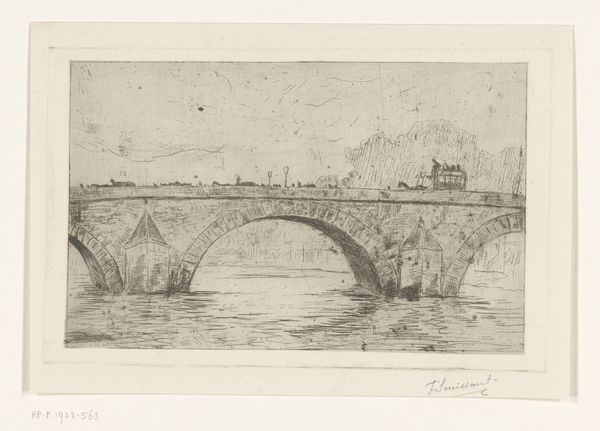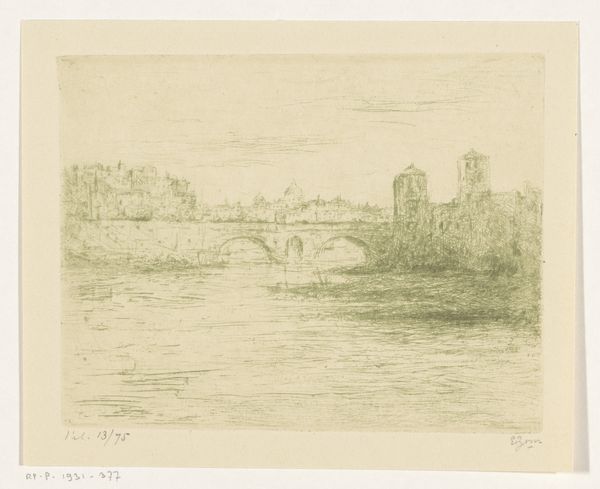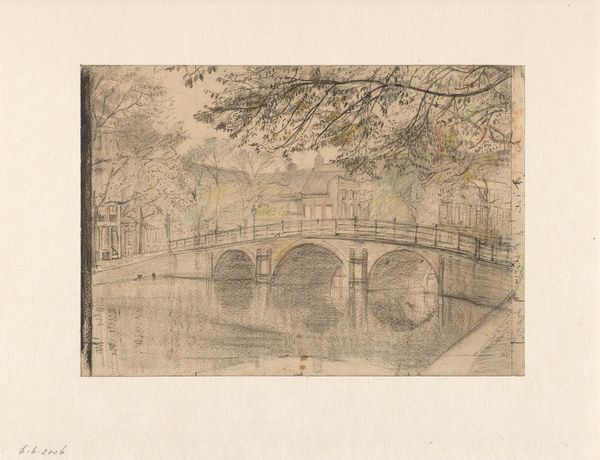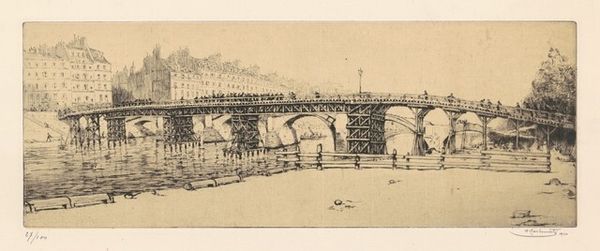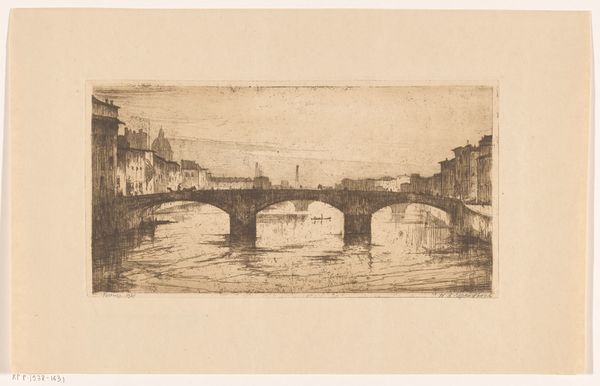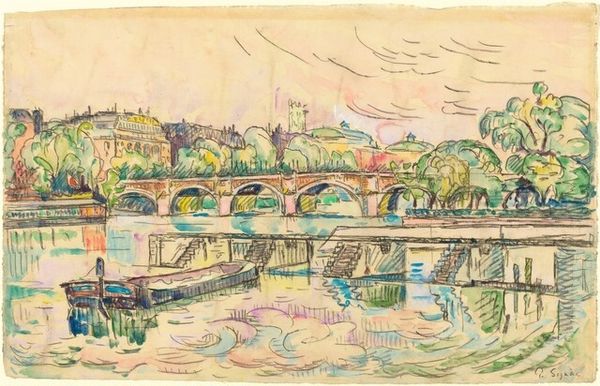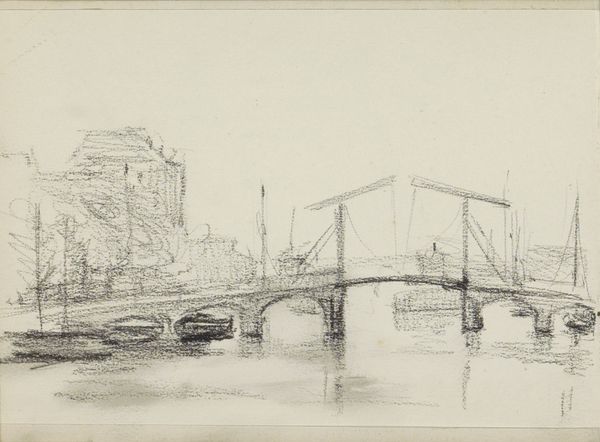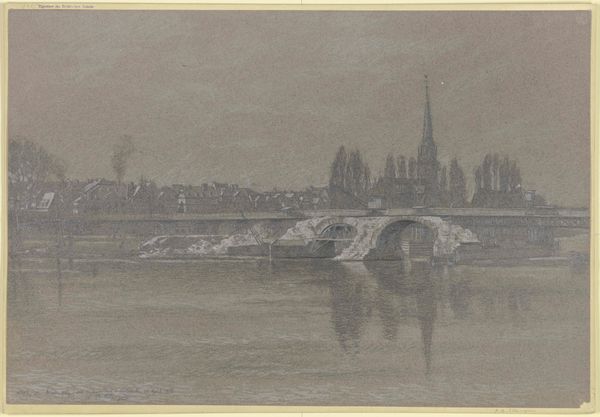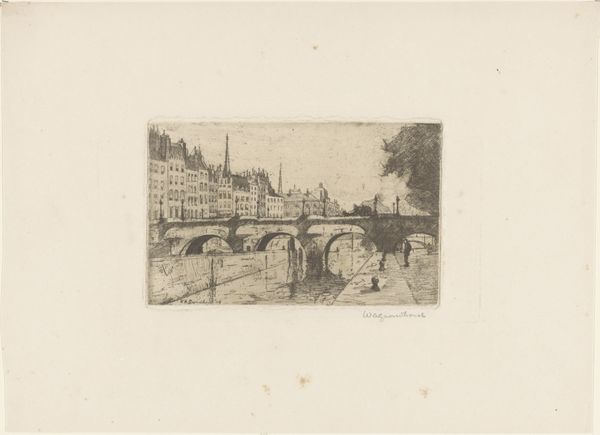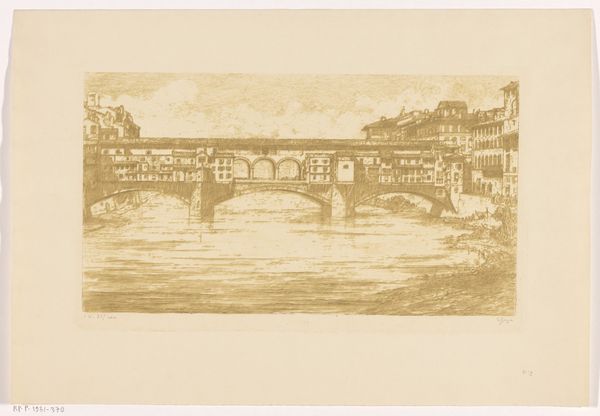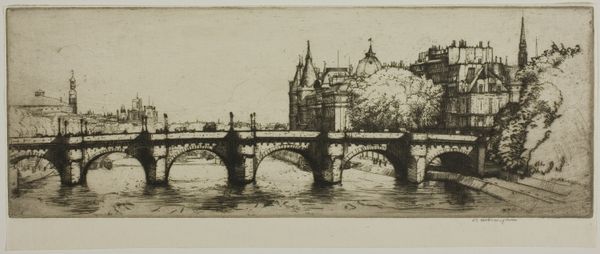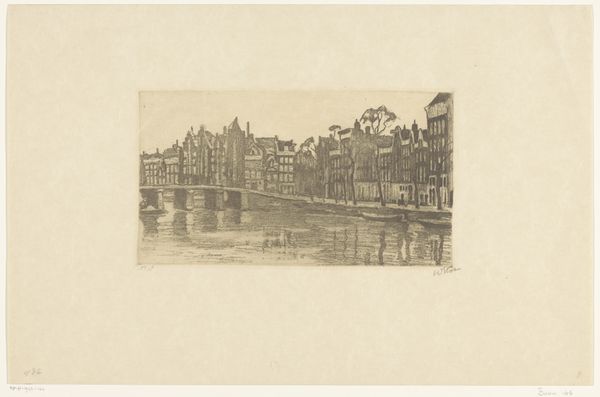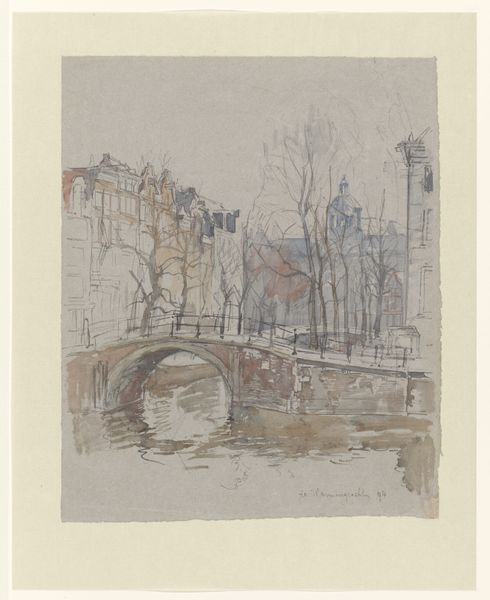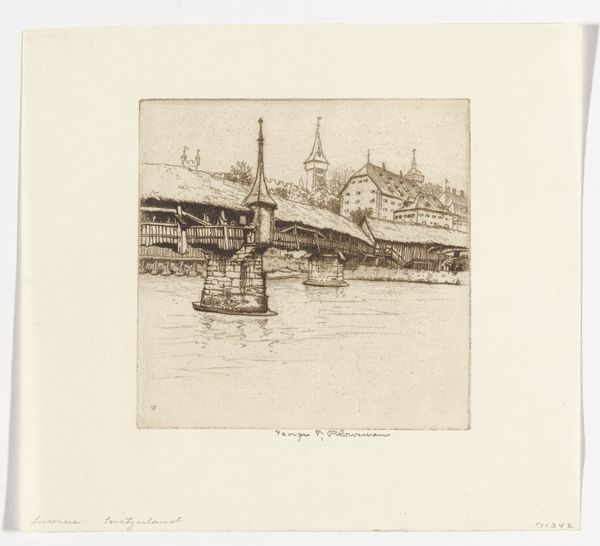
Dimensions: height 108 mm, width 175 mm
Copyright: Rijks Museum: Open Domain
Carel Nicolaas Storm van 's-Gravesande made this watercolour painting of a bridge over the Seine in Paris in 1903. It's a serene scene depicting one of the many bridges that cross the river, with the city's architecture softly rendered in the background. But what was Paris like at the beginning of the twentieth century? France was in its "Belle Époque", a period characterized by optimism, regional peace, economic prosperity, and technological and cultural innovations. We can imagine the artist, perhaps part of the burgeoning middle class, enjoying the benefits of this era, capturing the beauty of the Parisian landscape in his artwork. The Rijksmuseum, where this painting is housed today, plays a crucial role in preserving and interpreting such works. It allows us to reflect on the social and cultural values of the past. To understand the painting more fully, we might research the history of Paris in the early 1900s, looking at photographs and other artworks from the period. This is how art historians connect artworks to their social and institutional contexts, revealing the layers of meaning embedded within them.
Comments
No comments
Be the first to comment and join the conversation on the ultimate creative platform.
